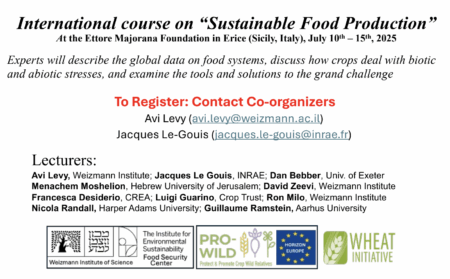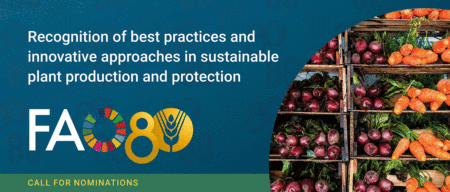- A significantly enhanced role for plant genetic resource centres in linking in situ and ex situ conservation to aid user germplasm access. On-farm conservation must result in use of the conserved diversity, and genebanks can help with that. Just another way of saying the two approaches are complementary?
- Looking back to look ahead: the temporal dimension of conservation seed bank collections. Those genebanks may need to do repeated sampling of the same population though.
- Landrace diversity and heritage of the indigenous millet crop fonio (Digitaria exilis): Socio-cultural and climatic drivers of change in the Fouta Djallon region of Guinea. Repeated sampling would defintely have helped.
- Community seedbanks in Europe: their role between ex situ and on-farm conservation. Repeated sampling is kind of what community seedbanks do, no?
- Impacts of climate change on fonio millet: seed germination and suitability modelling of an important indigenous West African crop. Community seedbanks may not be enough though.
- Phylogenetics, evolution and biogeography of four Digitaria food crop lineages across West Africa, India, and Europe. Maybe the wild relatives will help.
- Black Ash – a Forgotten Domestication Trait in Garden Orach (Atriplex hortensis L.). It’s amazing what people domesticated plants for in the past. And might in the future.
- Quality seed production scenario of Egyptian clover (Trifolium alexandrinum) in India: A 24-year retrospective analysis. But in the end, you have to get high quality certified seeds out, and that’s not always easy.
- The potential of seedbank digital information in plant conservation. Will definitely need a pretty good documentation system to keep all the above straight.
Open call for applications to an international course on Sustainable Food Production
We are pleased to announce the international course on “Sustainable Food Production”. It will be hosted at the Ettore Majorana Foundation and Centre for Scientific Culture in Erice (Italy), July 10th – 15th, 2025, as part of the 5th International School of Materials for Sustainable Development and Energy. The Ettore Majorana Schools are prestigious and attract outstanding instructors and students from around the world. The setting is quite spectacular in the medieval hilltop town of Erice, Sicily.
Ph.D. students interested in food production and sustainable agriculture are eligible to apply. Experts in these topics will present a broad range of approaches to address the grand challenge of food security under climate change. We will describe the global data on food systems, discuss how crops deal with biotic and abiotic stresses, and examine the tools and solutions to the grand challenge. We will teach advances in the fields of agroecology, conservation, and utilization of crop wild relatives, as well as biotechnology approaches, including genomics, the use of whole genomes, gene editing, and AI in modern breeding. We will also present new food production systems and consider their environmental costs and scalability.
Applicants should include a One-page motivation letter stating their background, why they want to join the course, their long-term professional plans, a CV with a list of publications, and one recommendation letter. The deadline for applications is June 1st, 2025. Answers will be given by June 10th, 2025. Forty students will be chosen by three of the course lecturers. Please send applications to avi.levy at weizmann.ac.il.
Costs for students: € 900 for the whole period. The cost of € 900 is all-inclusive: accommodation in double rooms for students, meals (drinks excluded), two coffee breaks, social events (e.g., excursion), and pick up at Palermo or Trapani airports to Erice at whatever time they arrive. The same goes for departure. Flight to Palermo or Trapani airports is not included. A limited number of fellowships are available for students from Low-income countries.
Yours sincerely,
The Directors of the School
Prof. Avi Levy and Dr Jacques Le Gouis
Lecturers
Avi Levy, Weizmann Institute
Jacques Le Gouis, INRAE
Dan Bebber, Univ. of Exeter
Menachem Moshelion, Hebrew University of Jerusalem
David Zeevi, Weizmann Institute
Francesca Desiderio, CREA
Luigi Guarino, Crop Trust
Ron Milo, Weizmann Institute
Nicola Randall, Harper Adams University
Guillaume Ramstein, Aarhus University
Help FAO celebrate PGRFA management
To commemorate its 80th anniversary, FAO plans to recognize some of these outstanding best practices and innovative approaches in sustainable plant production and protection, which have occurred in the last 40 years.
And among the technical areas being considered is — wait for it… “Management of crop germplasm, including collecting, conservation, characterization, evaluation, documentation, and distribution of plant genetic resources for food and agriculture”!
Coffee with everything
It might be because we happen to be doing something on the coffee diversity conservation strategy at work, but I have been noticing a lot of joe-related material online lately. There’s the bit on Sprudge (apparently, “the world’s most popular coffee publication”) about how coffee diversity needs a Svalbard. Seconded. And, from the same source, also comes a spotlight on Madagascar’s amazing coffee diversity.
Moving to West Africa’s diversity, there’s a Financial Times piece on Coffea stenophylla. And something that seems to be only on LinkedIn (for now) from Dr Steffen Schwarz of Coffee Consulate about how microbe diversity can do wonders with the flavour profile and caffeine content of C. liberica.
Finally, an official submission has gone in for Yemeni coffee to be included in UNESCO’s Intangible Cultural Heritage List. I wonder if all this bodes well for our thing.
Brainfood: CC & crop diversity, Dietary Species Richness, CC & banana, European genebank representativeness, Effective Population Size, VarScout, Borlotti bean diversity, Oaxacan? Green Dent, Sorghum mucilage, Gut bacterial diversity
- Climate change threatens crop diversity at low latitudes. At low latitudes maybe about a third of the production of 30 major crops shifts outside their climatic niche under 2-3°C global warming, and potential food crop diversity declines on half of global cropland, but potential diversity increases elsewhere. So that’s all good then?
- Dietary species richness provides a comparable marker for better nutrition and health across contexts. Dietary species richness (DSR) can be used as a marker for the nutrition and health. If DSR is related to production diversity, I guess that could mean trouble at lower latitudes?
- Socio-economic factors constrain climate change adaptation in a tropical export crop. Actually the reduction in suitable area is 60% for banana. And there’s a decline in yield too. Unclear what that will do to DSR.
- Plant evolutionary history is largely underrepresented in European seed banks. Would be interesting to apply this specifically to crops. Or even just crop wild relatives.
- The Idiot’s Guide to Effective Population Size. Can this be usefully applied to crops? I’d like to see how banana comes out.
- Digital Revolution in Farmer Fields: VarScout Unveils Kenya’s Varietal Landscape – The Case of Potato. I’d like to see how banana comes out.
- Genetic Diversity and Distinctiveness of Common Beans (Phaseolus vulgaris L.) Between Landraces and Formal Cultivars Supporting Ex Situ Conservation Policy: The Borlotti Case Study in Northern Italy. It’s difficult, but not impossible, to distinguish — and maintain — landraces of Borlotti beans apart from obsolete and modern cultivars. I wonder if VarScout would help.
- Oaxacan Green Dent maize is not from Oaxaca. Watch out for landrace names.
- Mucilage produced by aerial roots hosts diazotrophs that provide nitrogen in Sorghum bicolor. Not just maize. And another aspect of diversity to have to worry about.
- Cryptic diversity of cellulose-degrading gut bacteria in industrialized humans. And another… What’s the interaction with DSR though?

